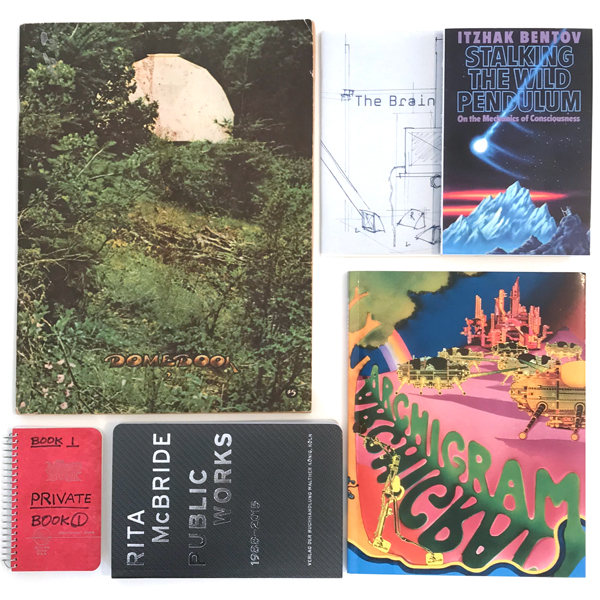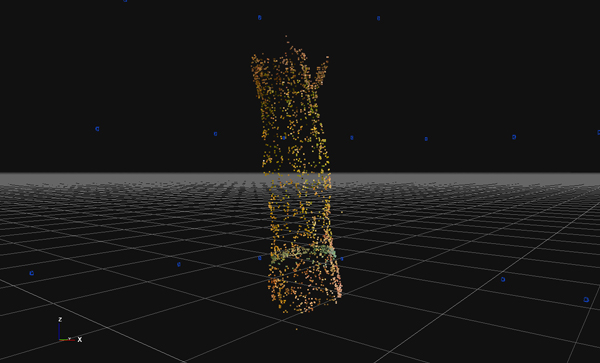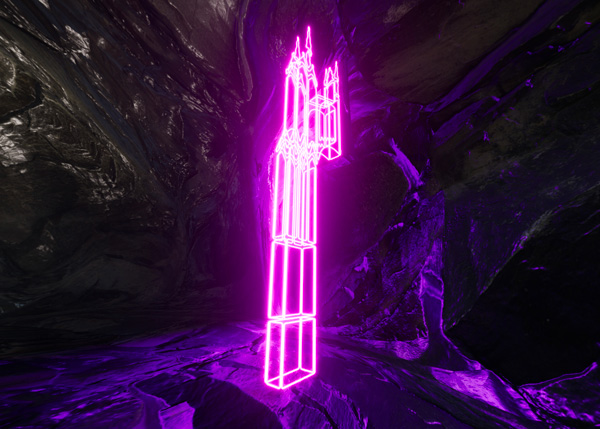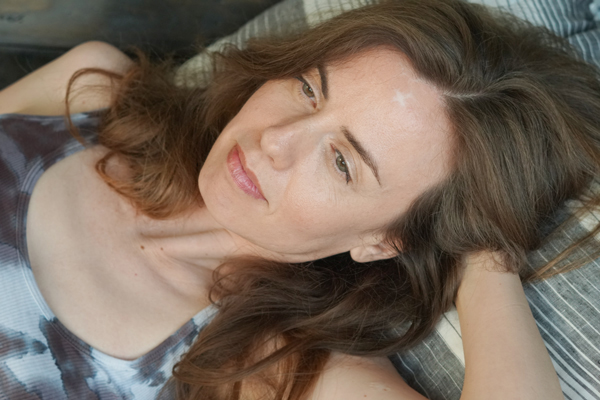Light reading (and rereading)

“There are things from heart to heart; this is the only real language.. all else is nonsense.” – Bhai Sahib, Sufi master, Daughter of Fire

“There are things from heart to heart; this is the only real language.. all else is nonsense.” – Bhai Sahib, Sufi master, Daughter of Fire
Have been playing around with a spectrum of 3D tools in the studio — new architectural sculpture underway — more on these evolutions to come.

A review of SUBSTRATA by The Art Newspaper’s XR Panel titled “Memories of Myst: Substrata, a new artist-run virtual exhibition, is like entering a magical afterlife” is available for view here.
I felt that this space added value by taking the viewer into an environment that is otherwise not available to us in real life. A good use of VR in creating a magical space that invites exploration as opposed to recreating a white cube gallery facsimile. Won Ju Lim’s and Kristin Posehn’s works stood out to me for their fitting use of the medium. – Dhiren Dasu
Before Covid-19 hit, I was lucky to enjoy clear water diving inside the cenotes in Tulum, Mexico. I would liken Epoch’s Substrata to that experience but in artistic terms. Among the presented works, certain pieces such as Kristin Posehn’s Cloud Flippening (2020) and Won Ju Lim’s Kiss T4 (2020) defy gravity, making the virtual context well worthwhile. – Seol Park Zappas
More information about Cloud Flippening, an architectural sculpture included in SUBSTRATA, can be found here.
 Cloud Flippening, 2020
Cloud Flippening, 2020Last year I picked up The Natural Way to Draw by Kimon Nicolaïdes. The Whole Earth Catalog once called it, “The best how-to book we’ve seen on any subject.” It can’t really be compared to other books on art — it’s more like a distillation of all the studio visits and conversations in bars I wish I’d had with someone who loved art so well.
Nicolaïdes was a painter, a camouflage artist in the US Army during World War I, and a beloved teacher at the Art Students League through the 1920s and 1930s. The book is a journey through his method as a teacher, published after his much-too-early death in 1938. He speaks in the clearest of voices. The Natural Way to Draw reads as easy as a chat, and as challenging as the wisest of mentors.
Let drawing be a placeholder. What follows is a selection of direct quotes plucked from throughout the book, with much application beyond.
“Do not try to learn a formula, but to become sensitive, to feel more deeply.
Do not try to master a technique. Progress has been made by the people who refused to submit themselves to mediums. The rules of technique have been made by people who copied those who made the progress.
Don’t worry if for the first three months your studies do not look like anything else called a drawing that you have ever seen.
The way to learn to draw is by drawing. People who make art must not merely know about it.
Learning to draw means learning to see – and that means a good deal more than looking with the eye.
If you do not feel as the model feels, your drawing is only a map or plan. Without a sympathetic emotional reaction in the artist there can be no real, no penetrating understanding.
Loosen up. Relax. Most of the time your instinct will guide you, sometimes guide you the better, if you can learn to let it act swiftly and directly without questioning it.
The sooner you make your first 5000 mistakes, the sooner you will be able to correct them.
Results are best when they come from the right kind of unselfconscious effort.
What we seek is not so much an intellectual as a physical response.
Do not take anything for granted.
Preconceived ideas about things with which you have no real experience have a tendency to defeat the acquiring of real knowledge.
Watch a child draw a house. He has in mind no picture that he has ever seen, no system for representing shingles or brick – unless he has been spoiled by the wrong kind of instruction. In his mind is an actual house, which he feels he is actually building as he draws. I watched one of my sons draw a dragon when he was about four years old. He contorted his own face and muscles as he drew and seemed actually to be afraid of the thing when he saw it on paper. We think too often of the thing we draw in terms of the ways we have seen it drawn.
If you make drawings of a knee until you are a hundred years old, your conception of it will still be far from what a knee actually is.
Do not allow familiar labels to interfere with fresh impulses.
Disregard ideas that are already formulated, or constantly test them by new fresh experiences.
We are all prone to accept our preconceptions instead of investigating a thing fully and anew.
A line in drawing is not meant simply to record how long or how wide a thing is. If it were it might as well be drawn with a rule. The important thing is for the line to say as much as possible of all that you know about the thing.
My whole method consists of enabling students to have experiences.
Your progress is charted, not on paper, but in the increased knowledge with which you look at life around you.
There is always a bigger truth undiscovered – unsaid – uncharted until you meet it.”
___
Join me for occasional notes on art & new work by subscribing to my mailing list here.
 Photograph by Deborah Jaffe
Photograph by Deborah Jaffe